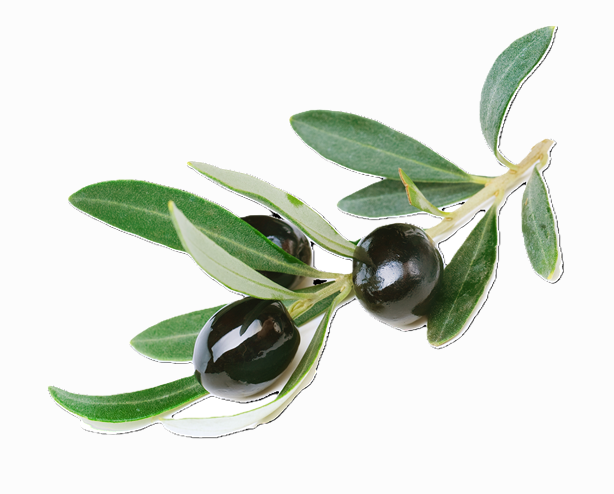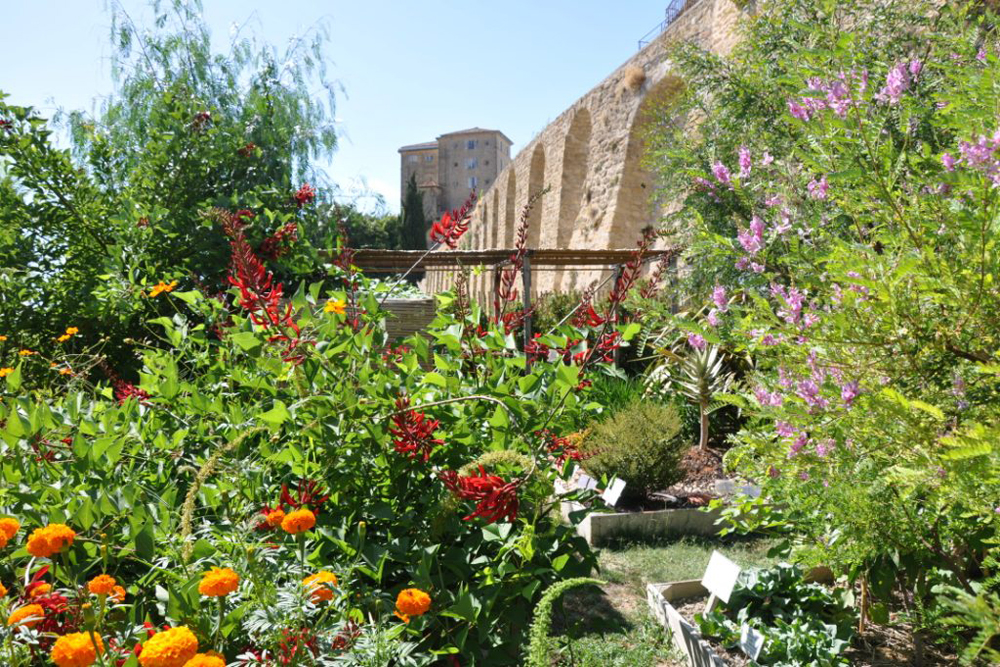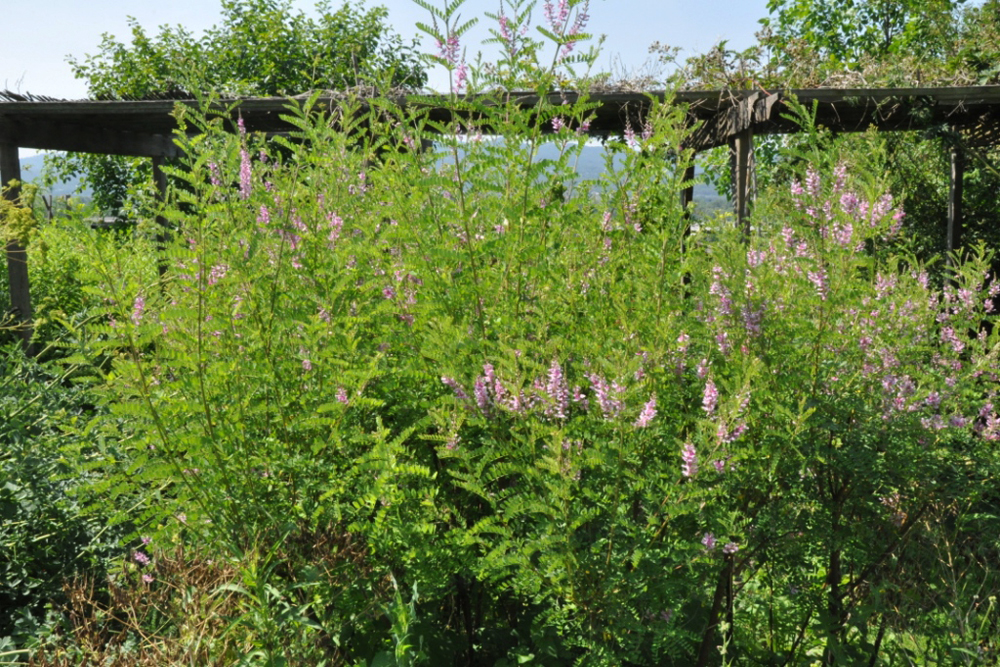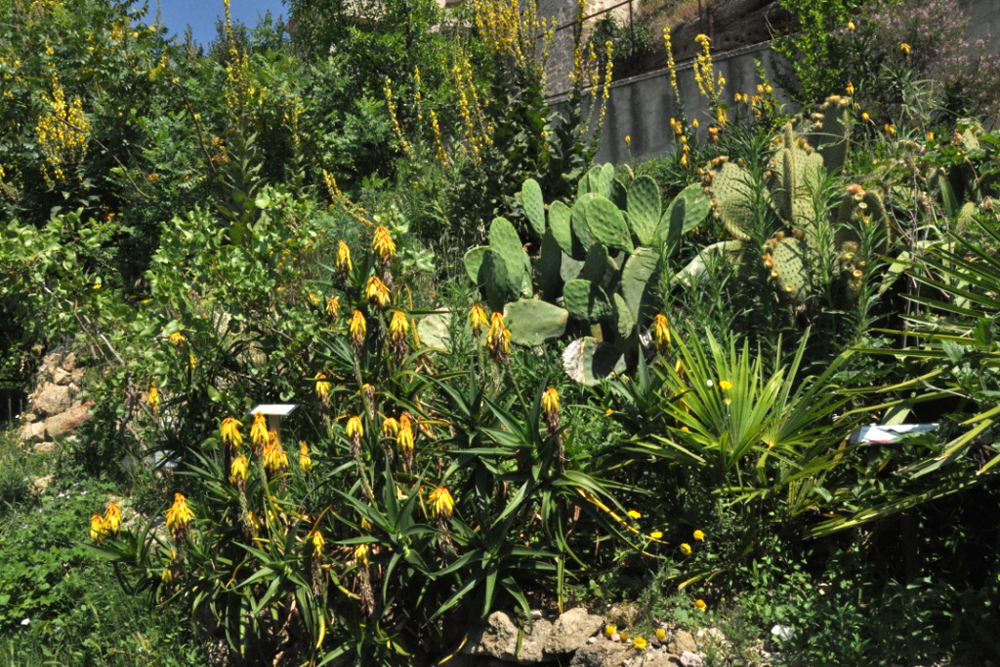June 2010 – A visit to two productive gardens in the Luberon
Click on the images to enlarge them / Cliquez sur les images pour les agrandir
Le Jardin Conservatoire des Plantes Tinctoriales
On a Tuesday in late June, in high temperatures, sixteen members joined our delightful guide, Magali Parmentier, for a tour of the garden of the Conservatoire des Plantes Tinctoriales at Lauris. The garden was built into the side of the terraced hillside of the château at Lauris and opened in 2002.
This is the only botanical garden in Europe dedicated exclusively to the cultivation and conservation of over 300 plants for making dyes – for fabrics, paints, inks, food colouring and cosmetics. Lauris’s historical connection with the dyeing industry stems from its production in the 16th century of vermilion: the bright red pigment made from the vermillons or ‘little worms’ which formerly proliferated in the local kermes oak woods nearby.
Up until 1900, another red dye, garance, was cultivated on the Durance river plain below and was used for printing cotton and the red of the French military uniforms. Similarly, nerprun (Rhamnus alaternus) and fustet (Cotinus coggygria) were produced and transported to Avignon for the dyers in the Rue des Teinturiers.
The garden is laid out in two parts:
The fountain garden focuses on the science of colourants. We learnt that, from a scientific perspective, many of the chemicals produced by the plants in these beds act as a form of self-protection or propagation. We were told about the difference between coloré and colorant and how, for the biochemist, the dye molecules remain active even after they have been extracted from the plant. Pharmacists and doctors down the ages have put this characteristic to good use in the fields of nutrition and cosmetics. Many such plants contain vitamins and anti-oxidants which help bolster our defence systems or facilitate cellular regeneration. These are employed in natural skin care products, some of which provide sun screens.
The bassin garden focuses on dye plants from around the world. This is a garden where many of the plants need to be watered. We heard about the diverse techniques and procedures used throughout the millennia to create vegetable dyes, inks and pigments. There are beds devoted to many different parts of the world, including China, India, the Americas, the Maghreb and the Mediterranean.
Following a delicious picnic next to the beautiful renaissance château at Lourmarin, we headed up a stony track into the Grand Luberon to meet Paula Marty.
La Ferme de Gerbaud
The farm has been in Paula’s family for three generations and she now cultivates several hectares of thyme, rosemary, sage, savoury, oregano and lavender, without any watering.
The plants are distilled locally for their essential oils, which we were later able to buy in the shop. We had a delightful and informative walk amongst the fields and picked up all sorts of culinary and medicinal tips. We learnt of the antiseptic and digestive properties of rosemary, the anti-spasmodic and diuretic properties of sage (and the wonders of aigo-boulido) and the value of thyme for clearing the airways when you have a cough and as an antibacterial agent. Lavender makes a wonderful antiseptic and a drop of oil in the bath, your shoes, the Hoover or the fabric conditioner compartment in the washing machine will enable you to appreciate one of the wonderful scents of Provence throughout your home.
Despite sizzling summer temperatures, this was a lovely day out under radiant Provençal skies: a “good to be alive” day, spent in the company of like-minded gardening friends. It doesn’t get much better than that!
Text: Sara Robinson
Photographs: Eric Legrand
Editor’s note:
The Jardin Conservatoire des Plantes Tinctoriales was designated a ‘Jardin Remarquable’ in 2011.
![]()






